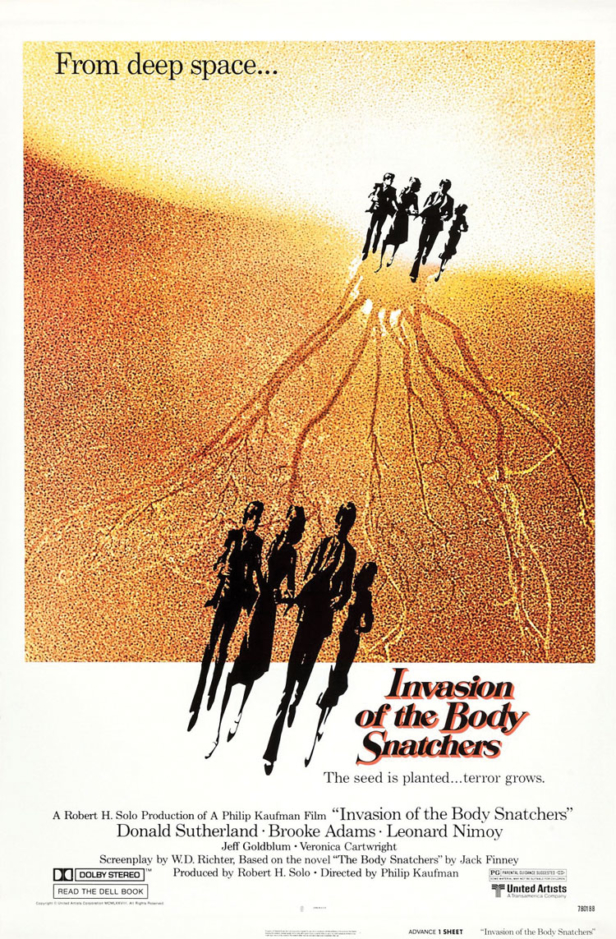Set in small-town America and concerning intergalactic organisms taking over humankind via emotionless replicates who ‘get you when you sleep’, Jack Finney’s 1954 short story The Body Snatchers was published during the height of McCarthyism.
However, its rather inconspicuous author largely dispelled notions that it was an allegory on communism or the importance of individuality. Nevertheless, considering the times, it wasn’t exactly irrational to propose such an analysis. Even if it was unconscious on the author’s behalf, the story’s proposed political undertones have subsequently allowed generations of filmmakers to creatively reinterpret it to reflect their individual eras. Finney had tapped into the paranoia of an era and a very primal fear concerning the loss of human identity.
This is the crux of Don Siegel’s still chilling small-town set 1956 original adaptation Invasion Of The Body Snatchers, (not to be confused with the Val Lewton produced 1945 grave robbing horror flick The Body Snatcher). It features Kevin McCarthy as Miles Bennell; a local doctor who finds himself inundated with patients claiming impostors have replaced their loved ones. A psychiatrist swiftly shrugs off these cases as an epidemic of mass hysteria caused by “worry with what’s going on in the world…” Later, the same patients claim everything is now okay, but when a featureless body turns up bearing the exact measurements of a male friend, Miles begins to take the original reports of human reproductions more seriously.
It isn’t long before giant seedpods emerge hatching human clones, police authorities act strangely and characters once relatable and trustworthy become emotionless drones. As the disturbingly duplicated townspeople mass together, Miles and love interest Becky (Dana Wynter) realise they are the only true humans left in the town of Santa Mira… as long as they can resist the urge to fall asleep…
The noirish quality of the black-and-white cinematography certainly helps to enhance the probing eeriness of Siegel’s film, providing the narrative with a helpless, chilling visual undertone of closing-in-on-you dread and terror. Yet studio Allied Artists was reluctant to take this pervading doom to its natural narrative conclusion.
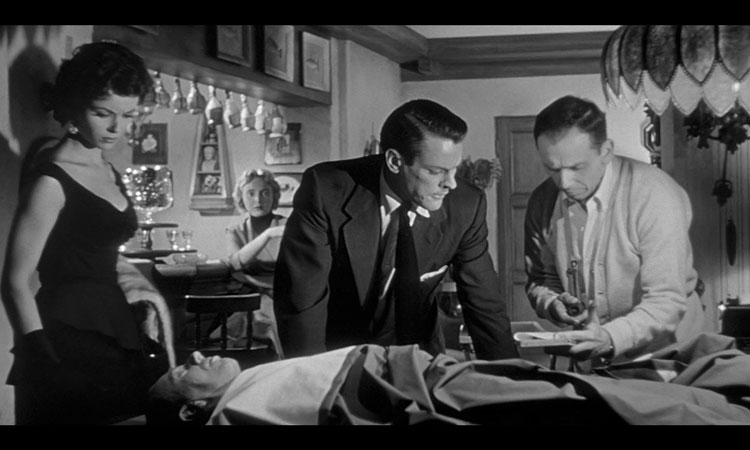
Originally, the film was to end with a pull-away shot of McCarthy’s infamous: “You’re in danger! They’re here already! You’re next! You’re next!” forewarnings to camera as pod-carrying trucks pass him by on the freeway. However, the studio thought this was too downbeat a dénouement for audiences and thus a framing story was hastily ordered, reluctantly shot by Siegel and added to the film. It featured the now-in-place prologue where a ranting McCarthy, held up in a hospital following the incident, relays the extraterrestrial events in flashback. It also concludes with a reassuring epilogue, with the aforementioned pods located and the FBI notified about the impending threat.
The studio also considerably reduced the film’s original humour, as they were uncomfortable with how it played against the horror and didn’t think the two elements worked together in a movie. Despite the nervous post-production tinkering, the haunting legacy of Siegel’s film remains largely intact.
Siegel’s film also served as an appropriate bridging point for Philip Kaufman’s edgy, equally titled 1978 sequel-of-sorts ‘remake’, which saw the small-town paranoia spread to the big city; specifically Seventies San Francisco where, thanks to the repercussions of Watergate and exposure of corruption in the government, the population is largely disillusioned already.
Providing the key continuity was a scene-stealing cameo by Kevin McCarthy, who abruptly thumps on the windshield of new protagonist Donald Sutherland’s car and voices those exact warnings as before. Kaufman purposely set the scene up so it could be interpreted as a clever continuation.
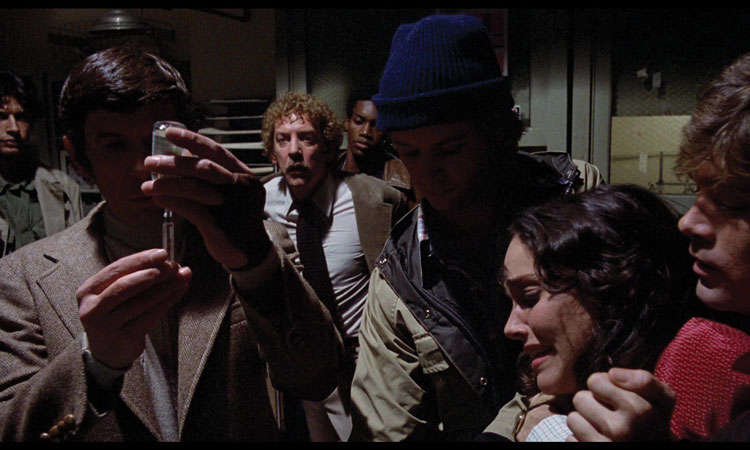
“Let’s suppose he had left the last movie where he wanted to leave it… running out of the small town saying, ‘they’re here!’ and […] that he ran for 20 years trying to spread the word…’the pods are coming!’” the director says (in the documentary Re-Visitors From Outer Space) signifying a clever rewrite of the original intended ending of Siegel’s film.
“I don’t look at our version as a remake… it’s really a reimagining in a way, a variation on a theme,” Kaufman continues. “We could explore more of the characters… what makes a pod and what makes people be not pods and is that ‘not podiness’ worth preserving.”
One of the earliest characters suspected of having transformed into a pod was Geoffrey Howell, the already rather preoccupied and self-absorbed husband of Brooke Adams, portrayed by actor Art Hindle.
“Philip and I had extended conversations about what these pod people were,” Hindle tells SciFiNow. “What we decided was these characters, even though they no longer had emotions, could think emotions and they could fake emotions by thinking: ‘I should be smiling here; I should be relaxed here; I should be this or that.’
“An acting technique is to play against the emotion. When somebody is sad for insistence, don’t play that. Try to play that you’re trying to put on a happy face or you’re trying to be happy through all this sadness. With playing a pod person, you’ve got to try and play it a little monotone, but also the ‘pod’ character would try and play or ‘think’ an emotion against that monotone so as not to be found out… a more perfect example than my performance would be Leonard Nimoy’s Dr Kibner and his complex personality…”
“Art and myself were just a fabulous match immediately, however you suspect that really I liked Donald’s character more like a husband,” remarks Brooke Adams to SciFiNow, looking back at the unconventional relationship her character shares with Sutherland, which forms the pivotal humane backbone to the story.
“We had a really nice rapport and chemistry. Donald even felt we should become a new romantic couple in movies, which never happened but we did do another movie together.”
The cast, which also included Nimoy as a pod-skeptic psychotherapist and Veronica Cartwright and Jeff Goldblum as hippie mud bathhouse proprietors, were able to draw unique inspiration from their urban surroundings, identifying the real ‘pods’ living amongst them at the time.
“Brooke, Jeff [Goldblum] and myself went out to dinner one night,” recalls Cartwright, who played early pod believer Nancy Bellicec, to SciFiNow. “Jeff being ‘Mr Outgoing’ was talking to the taxi driver and carrying on [but] the driver wasn’t answering him. So, when we got out Jeff said: ‘Oh my god! He’s a pod! He’s a pod!’ We began looking at people totally differently. There would be people who went to the bank and they’d stand in line and then sort of just walk away… they did seem to be like pod people!”
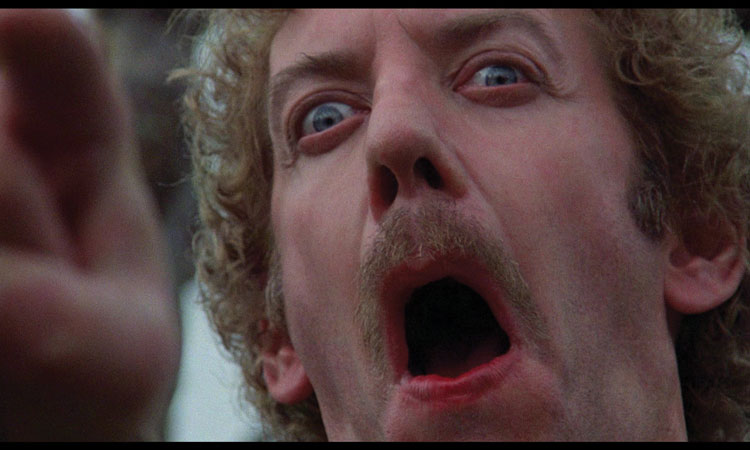
The naturally irregular geographic structure of San Francisco also helps to play its part in conveying an unusual unease. In fact, the city’s real ‘pod-like’ population were discreetly captured unstaged, for example, the memorably intimidating glances from people on public transport, or ‘soulless’ shoppers striding the streets. This, together with the strange off-kilter angles, ominous shadows, eerie reflections and overall film noir visual paranoia brilliance achieved by cinematographer Michael Chapman, (who had lensed Taxi Driver) all add to a forewarning of something strange lurking from this city and of a world gradually closing in on itself.
The conception of the film’s extraordinarily visceral opening plant pod invasion sequence – where the alien organism passes through the rain and cross-pollinates – was given some legitimacy too, due to a peculiar occurrence in San Francisco just prior to the film’s production.
“There was a very weird event that happened just before we got there,” reveals Cartwright. “These spiders and webs started to fall from the sky and they were shrouding all the trees… it was a weird phenomena that happens every 50 years. So, that article Donald Sutherland is clipping out in the movie about things floating around and falling down was an actual event that happened the week before we got up there. Therefore, why can’t this web have turned into these flowers and be insidious? Why can’t it be something like that?”
As Art Hindle highlights, the hippie generation started in San Francisco, giving further credibility to the paranoia. “I think it was one of the reasons Kaufman wanted to remake it because it certainly played into the times, the Seventies with the paranoia and particularly with San Francisco,” he says. “That’s why it was an ideal setting for that and why the story played so well to people – they could relate and say: ‘Yeah, I felt like that! My family’s been body snatched!’”
In fact, Cartwright and Goldblum’s characters in particular were conceived as leftovers from that generation. “It was the Seventies and we were like hippies and were doing all these sort of health rituals,” continues Cartwright. “I think my character was the only one who sort of realised how you could beat this infringement; you couldn’t sleep and why do we always think that things come in metal ships? They don’t have to do that they can be the most gorgeous flower and send out tentacles and sort of take over.”
True to form, it is Nancy who, come the climax, remains the apparent sole surviving human being left, making the final twist even more shocking. “At the end of the movie when Donald Sutherland’s character screams at me I just freaked out! Both of us were told different things, so when he was revealed to have turned into one of them I flipped out!” remembers Cartwright. “My character was the voice of reason… I even thought they might make a sequel, as she’s taken every precaution not to be found out and ensured nobody else was around, but of course, I did not know Donald was going to do that!”
Looking back, Art Hindle thinks one of the reasons Kaufman’s Invasion Of The Body Snatchers is held in such high regard is how it authentically captures the times: “I was a closet hippie in the Seventies and I think paranoia was our favourite word and it certainly plays on that particular paranoia.”
“It keys into a paranoia, that is perhaps not so paranoid, about being taken over,” considers Brooke Adams. “This feeling that things are weird… everybody feels that nowadays in this country. Things are so strange. The film definitely has a way of sneaking up on you and making you paranoid about what’s really going on in the government.”
Tellingly, due to the loss of the close-knit town community depicted in Siegel’s film, Kaufman’s version also poses the thought-provoking question: if there were people evolving into a new life-form like this in the city would we even notice?
Fifteen years later, a different era, and yet another new setting and protagonist gave birth to a third screen incarnation of Jack Finney’s story, with the 1993 shocker Body Snatchers. It pits Gabrielle Anwar’s fragile yet determined teenager Marti Malone against a new pod threat that has broken out in a military base in Alabama.
Originally written by and conceived as a vehicle for Re-Animator filmmaker Stuart Gordon to direct, Warner Brothers eventually appointed provocative The Driller Killer and Bad Lieutenant filmmaker Abel Ferrara to helm the film. Ferrara, a fan of Jack Finney’s original story, wasn’t exactly thrilled about the new military base locale, however some cast members viewed it in a more positive light.
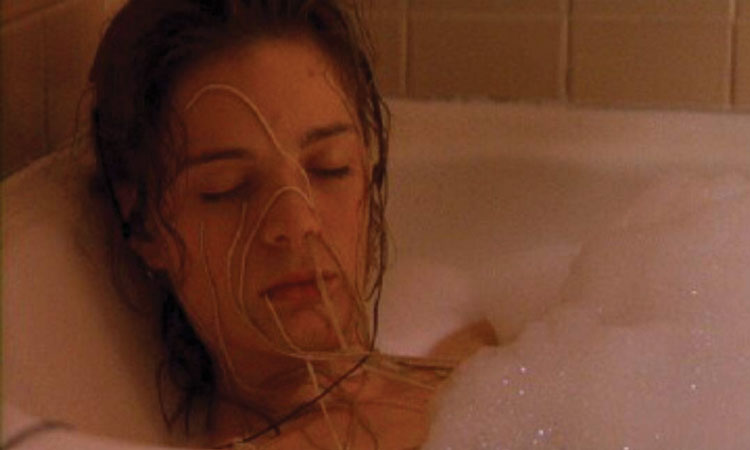
“I think that the army base is a genius location because everybody is already so regimented. Therefore, it’s a much more difficult community to identify people who are acting stoic and stiff,” considers Christine Elise who played the rebellious daughter of the airbase commander who befriends Marti.
One of the most memorable performances in the movie comes from Meg Tilly, particularly after she turns into a duplicate of Marti’s stepmother and lays down the futile state-of-play in a spine-tingling scene to her husband.
“My favourite moment is when she says: ‘Where you gonna go? Where you gonna hide…?’ that’s so spooky and eerie… then her scream is so the opposite to the calm, nurturing mother character that she’s previously been,” considers Elise.
Indeed, a stylistic touch that Ferrara deliberately carried over from Kaufman’s Invasion Of The Body Snatchers was that terrifying shrill scream, something that Elise was at pains to perform herself when it came time for the shock revelation that her gutsy, once independent character, is now a pod as well.
“I had to hold that scream longer than I could hold my breath because these beings don’t inhale, they just scream out!” she recalls. “It was February in Alabama and it was cold and if I breathed at all you would be able to see my breath, so in-between takes I sucked on ice cubes in the freezing cold so you wouldn’t see me breathing.”
Ferrara’s King Of New York cinematographer Bojan Bazelli lends an equally cold and chilling aura to the visuals, resulting in another stunningly lensed, distinctively depicted and nightmarish edition to the Body Snatching series that could also be interpreted as an indictment on the unnerving conformist mentality of the military.
Another 15 years on The Invasion struck – the fourth and (to date) most recent adaptation of Finney’s story, which shifts events to Washington and removes the ‘body snatching’ and duplicating element by having it involve an alien infection that changes people’s brains instead of their bodies. Helmed by Downfall’s Oliver Hirschbiegel and starring Nicole Kidman and Daniel Craig, it was a troubled production plagued by reshoots that were scripted by the Wachowskis and directed by V For Vendetta’s James McTeigue.
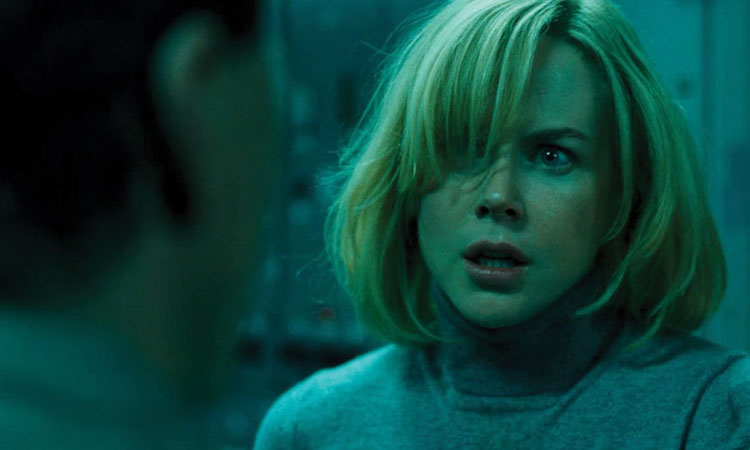
Veronica Cartwright returned for a scene-stealing cameo as an angst-ridden patient of Kidman’s therapist, where she nervously explains that her husband is no longer her husband. However, as originally shot and conceived, the scene was to have more of an overt reference to Cartwright’s previous role from Kaufman’s Invasion Of The Body Snatchers.
“Oliver requested meeting me because I had been in the [other] one and so I met with him and my character could’ve survived and taken on a whole new identity and so here it was, it was happening all over again!” she recalls.
A year later, Cartwright had her scene reshot by McTeigue, and as a result her character lost that instrumental connection with the 1978 film. “It was different. [Originally] I was more paranoid about things that were happening and it made it more like I’d been through this before and I knew something really wasn’t good,” she continues.
“I thought Oliver was doing a great job. He was bringing great eeriness to the whole thing… he had his own cinematographer, which he had worked with for a long time and he really added a sort of grunginess to it which made it much more interesting. Then McTeigue came in… it just looks like an entirely different movie; it sort of got nicer. It was odd. I don’t think it melds very well together.”
Indeed, the extensive reshoots resulted in a tonally imbalanced movie, one that builds slowly and suspensefully but is compromised by a sudden jarring frenetic pace, a gutless optimistic ending, along with a questionable overall message that seems to suggest only mindless drones are capable of enacting world peace.
Surely, if the next instalment draws on our current threatening totalitarian climate, where we are already trying desperately to hold onto our humanity, it will have enough real-life substance for subtle yet snappier allegory, where humans once again face the threat of depersonalisation and must fight, and thus stay awake, to survive.
Invasion Of The Body Snatchers is available on Blu-ray from Arrow Video.
